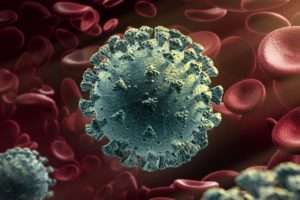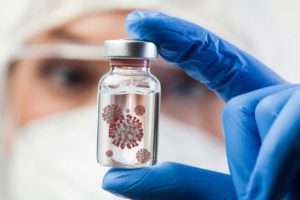Tuberculosis (TB) is frequently seen as a sickness of the past. It is, nonetheless, one of the three most deadly infectious illnesses, especially in impoverished nations. Most individuals never develop symptoms, but those with a compromised immune system, such as the elderly, malnourished, and HIV-positive persons, are more vulnerable.
When infected persons cough or sneeze, the sickness spreads via the air. Common symptoms include a persistent cough, fever, weight loss, chest discomfort, and dyspnea.
What is Tuberculosis (TB)?
- Tuberculosis (TB) is a disease caused by bacteria that are spread from person to person through the air.
- The lungs are the most prevalent site of TB infection, although it can also affect the brain, kidneys, and spine.
- Untreated TB can lead to death.
Tuberculosis (TB) is a highly infectious illness. According to the World Health Organization (WHO), TB is the 13th leading cause of death worldwide and the second leading infectious killer after COVID-19. In the United States, however, the illness is rather uncommon. The majority of persons infected with tuberculosis in the United States exhibit no signs or symptoms.
Should new employees undergo PPD tests?
As a new hire, you may be required to undergo several laboratory testings (such as TB testing, blood testing, chest X-Ray, etc.), in addition to other work employment requirements.
This is also mandated by most employers in the commercial services or medical field. If you are a health care provider, a PPD test is definitely a requirement. Note that testing for Tuberculosis is widely recommended and frequently needed for employment in a variety of areas, including but not limited to health care, education, and social services.
Who’s at Risk in the Workplace?
Employees in healthcare and other fields, where a large number of individuals occupy a space for long periods of time, are at risk of developing tuberculosis. When someone with TB coughs, speaks, or sings, the disease could spread via the air.
According to the Centers for Disease Control and Prevention (CDC), TB is not shared through specific physical contacts, such as shaking hands, kissing, sharing food or drinks, using the same toothbrush, or touching bed sheets or toilet seats.
Institutions such as schools, hospitals, correctional, social assistance shelters, and homes for the elderly are places where TB can easily spread.
TB testing options
The Tuberculin Skin Test or TB skin test (also called TST or Mantoux) and TB blood test (also called an Interferon Gamma Release Assay or IGRA) are the two types of tests used to identify tuberculosis in the body. Positive reactions or positive results indicate that a person has been infected with the bacterium that causes tuberculosis.
It is impossible to identify whether a person has latent TB or has developed an active TB infection. Other tests, such as a chest x-ray and a sputum sample, are required to determine whether or not the person’s tuberculosis is active.
Administered by a PPD testing expert (urgent care physician), you will be swabbed with alcohol in your inner forearm. A syringe containing a small amount of purified protein derivative (PPD) will then be injected beneath your skin’s top layer. You will feel a little sting from the PPD shot but this will eventually subside. A lump or tiny welt will appear but should disappear within a few hours.
The test findings are negative if:
- The region of skin where you received the PPD injection isn’t inflamed or hardened 48 to 72 hours following the injection.
- You only have mild skin redness and no firm bump under the skin.
- A negative test result indicates that you have not been infected with TB bacteria.
You may get a false-positive result if you have been vaccinated with the Bacillus Calmette-Guérin (BCG) vaccine in the past. To know more about getting a PPD, urgent care near me TB testing, and when to read PPD results, read What is a PPD Test?
Final Thoughts
Tuberculosis is a deadly disease but it can be prevented and treated when diagnosed early. Making PPD tests mandatory in a company can help minimize its spread among employees. And when employees are in good health, business owners can guarantee productivity and better work performance in the workplace.










